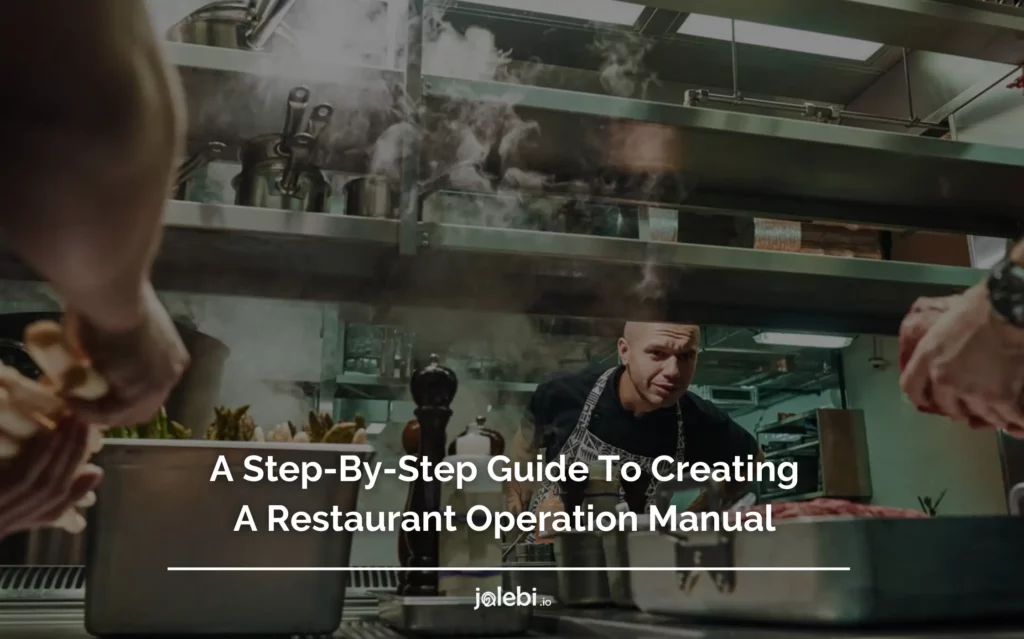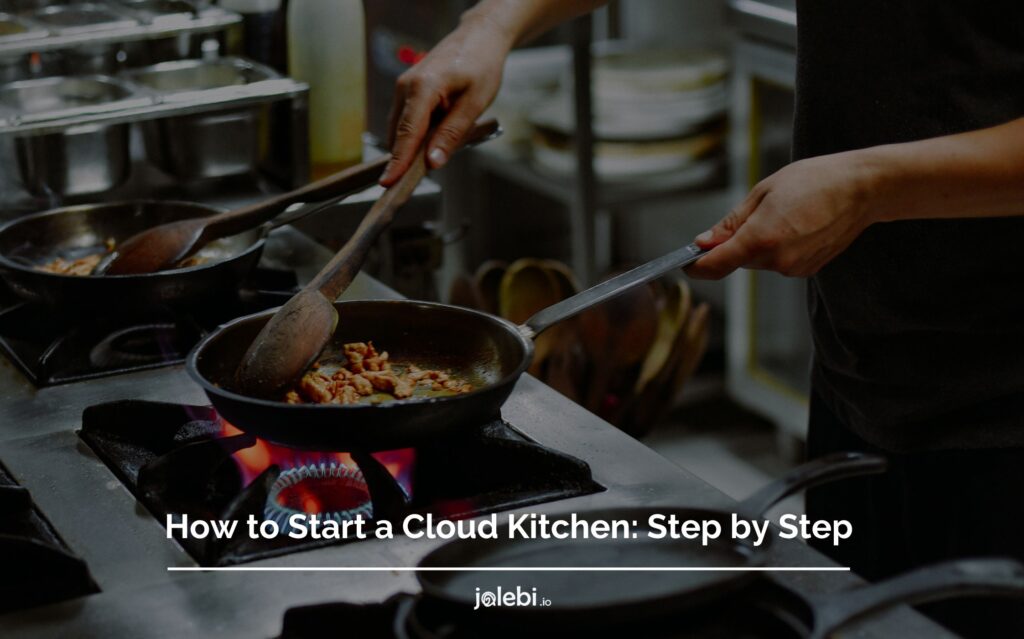Table of Contents

According to the National Restaurant Association, around 30% of restaurants fail during the first year of operation.
Running a successful restaurant requires much more than just serving great food. Restaurant management is filled with complexities.
It requires a well-managed and organized operation that runs smoothly day in and day out. This is where a restaurant operation manual comes in.
From managing inventory and keeping the kitchen stocked, to dealing with customers and handling staff, there’s a lot to manage daily.
An operation manual provides a detailed guide for running your restaurant, ensuring that every aspect of your business is covered and all employees are on the same page.
Creating a restaurant operation manual can be a daunting task, but with a step-by-step guide, you can break it down into manageable pieces and create a manual that sets your restaurant up for success.
In this blog, we will provide a step-by-step guide to creating a restaurant operation manual to help you pave your way to success.
What Is A Restaurant Operation Manual?
A restaurant operation manual is a document that outlines how a restaurant should be run.
It covers all aspects of the business, from the front of the house to the back of the house, and everything in between.
The operations plan for a restaurant is a comprehensive guide that covers everything from opening and closing procedures, to menu design and food safety.
The manual should be created by the owner or manager, and it should be followed by all employees. This will ensure everyone is on the same page and knows what is expected of them.
Having a well-organized operations plan of a restaurant can make running a restaurant much smoother, and it can help to avoid problems down the road.
Benefits Of Creating An Operations Plan For A Restaurant
If you’re thinking of opening a restaurant, one of the first things you should do is create an operations plan.
This document will outline how your business will run on a day-to-day basis and can be essential for securing funding and attracting investors.
Although creating an operational manual may seem like a time-consuming and tedious task, the benefits far outweigh the effort put into it.
Here are some of the key benefits of creating a restaurant operation manual:
1- Consistency
An operation manual ensures consistency in your restaurant operations.
By providing a detailed guide, you can ensure that every employee is trained the same way and that they all follow the same procedures, resulting in a consistent experience for your customers.
2- Efficiency
A well-written operations manual of a restaurant can help to streamline your restaurant’s operations, reducing waste and increasing efficiency.
By providing a clear and concise restaurant business plan, employees can complete tasks more quickly and effectively.
3- Training
An operation manual can serve as a valuable training tool for new employees. Instead of relying solely on verbal instructions, new employees can refer to the manual to learn how to perform specific tasks.
4- Crisis Management
The operations manual of a restaurant can also serve as a crisis management tool. In the event of an emergency or unexpected situation, employees can refer to the manual to know how to react appropriately.
Therefore, creating a restaurant operation manual that consists of an effective restaurant business plan can help to improve consistency, efficiency, training, and crisis management in your restaurant. It is an investment that can pay off in the long run and set your restaurant up for success.
Steps To Create A Restaurant Operations Manual
Creating a restaurant operations manual may seem like a daunting task, but it is essential for any successful restaurant business.
By taking the time to document your procedures and processes, you will create a valuable resource for your staff and managers.
Here is a step-by-step guide for creating an effective manual for your restaurant.
1- Define Your Restaurant’s Goals And Objectives
Start by defining your restaurant’s goals and objectives.
What is the vision for your restaurant? What sets it apart from others in the industry? This will help you create a clear and consistent message throughout your operations manual.
Your goals might include things like increasing sales, improving customer satisfaction, or expanding into new markets.
Whatever your goals are, make sure they are specific, measurable, achievable, relevant, and time-bound (SMART).
Your objectives should support your goals. For example, if your goal is to increase sales, your objectives might be to increase marketing efforts, add new menu items, or offer discounts.
By clearly defining your goals and objectives, you can create an operations manual that will help you achieve success.
2- Identify Key Areas
Identify the key areas that your operations manual will cover, such as the front of the house, back of the house, customer service, and management. It will help you stay organized and focused as you create your manual.
Each section of your manual should provide detailed information on the procedures and processes for that particular area.
For example, the front of the house section could include information on opening and closing procedures, while the back of the house section could provide instructions on food preparation and safety.
The customer service section could outline expectations for interacting with guests, and the management section could provide information on scheduling, budgeting, and other business-related matters.
By taking the time to thoughtfully consider what needs to be included in your restaurant or franchise manual, you can ensure that it will be a valuable resource for your team.
3- Create A Standard Operating Procedure
A well-designed standard operating procedure section in the operations manual of a restaurant can help to boost efficiency and productivity in your business.
By outlining clear procedures for various tasks and activities, you can ensure that everyone in your team is on the same page and knows exactly what needs to be done.
A standard operating procedure can help to avoid confusion and wasted time and can make your business run more smoothly overall.
4- Cover Food Safety Protocols
As a restaurant owner or manager, you know that food safety is important to the success of your business. But did you know that including food safety protocols in your ops manual can help to ensure that your staff is always following best practices?
By having a dedicated section on food safety in your operations manual, you can make sure that everyone on your team knows the importance of keeping customers safe.
You can also include specific procedures for handling food and cleaning up after meals, so there’s no confusion about what needs to be done.
Including food safety protocols in your restaurant or franchise manual is a simple way to show your staff that you take food safety seriously.
5- Include Restaurant Technology
As a restaurateur, it is important to keep up with the latest technology to ensure that your operation is running smoothly, thus it becomes essential to include it in the ops manuals.
By doing so, you will be able to track progress, manage inventory, and keep track of customer orders more efficiently.
In addition, using restaurant technology will allow you to provide a better experience for your customers by being able to customize their orders and offer them discounts or rewards.
It may be helpful to include specific instructions for each system, including how to troubleshoot common issues, how to maintain the system, and any security protocols that must be followed. It may also be useful to include information on who to contact for technical support or training.
If you’re looking for a platform to manage your restaurant’s operations, partner with jalebi today.
From streamlining back-of-house operations to powering front-of-house guest experiences, jalebi has everything you need to run your business efficiently and effectively.
6- Include Staff Training Guidelines
It’s essential to include staff training guidelines in your operations manual. Doing so will ensure that your employees are properly trained and that they understand your expectations.
Your staff training guidelines should cover topics such as customer service, food safety, and emergency procedures.
Including these topics in your manual will help to create a cohesive and professional team that is capable of providing excellent service to your customers.
Final Thoughts
According to Breadcrumb, a well-executed operations manual can help to improve profitability by reducing waste, increasing efficiency, and improving customer satisfaction.
If you’re planning to create a restaurant operations manual, it’s important to take the time to think through all of the different aspects of your restaurant’s operation and to tailor your manual to the specific needs and requirements of your business.
You may want to consult with other restaurant owners or managers, as well as industry experts and consultants, to get ideas and insights on what should be included in your manual.
Remember that creating an operations manual is an ongoing process, and you should plan to update and revise it regularly to ensure that it remains relevant and up-to-date with changes in regulations, policies, and procedures.
With the right approach and a commitment to ongoing improvement, your restaurant operations manual can help to set your business up for success and growth over the long term.
Frequently Asked Questions
- What are the three standard operating procedures for restaurants?
There are three standard operating procedures for restaurants that should always be followed to ensure a safe and healthy environment for both employees and customers.
These procedures are: proper food handling, effective cleaning and sanitizing, and maintaining a pest-free establishment.
- What should be in a restaurant training manual?
A restaurant training manual should be comprehensive and cover all aspects of running a successful eatery.
From food safety and handling to customer service and front-of-house procedures, to back-of-house operations like kitchen management and menu development – every element should be addressed to ensure that staff is properly equipped to do their jobs.
In addition, the manual should be regularly updated to reflect changes in best practices or new legislation.
By having a well-developed training manual, restaurants can provide their employees with the tools they need to succeed while protecting the business from liability.
- What are the 4 Ps of a restaurant?
The four Ps of a restaurant are as follows:
Product: The food and drink that the restaurant offers. This includes the type of cuisine, the quality of the ingredients, and how the dishes are prepared.
Price: The amount of money that customers must pay for the product. This includes both the menu prices and any special offers or discounts that are available.
Promotion: The way in which the restaurant promotes itself to potential customers. This can include advertising, PR, social media, and word-of-mouth recommendations.
Place: The location of the restaurant, can influence factors such as footfall, accessibility, and parking.











